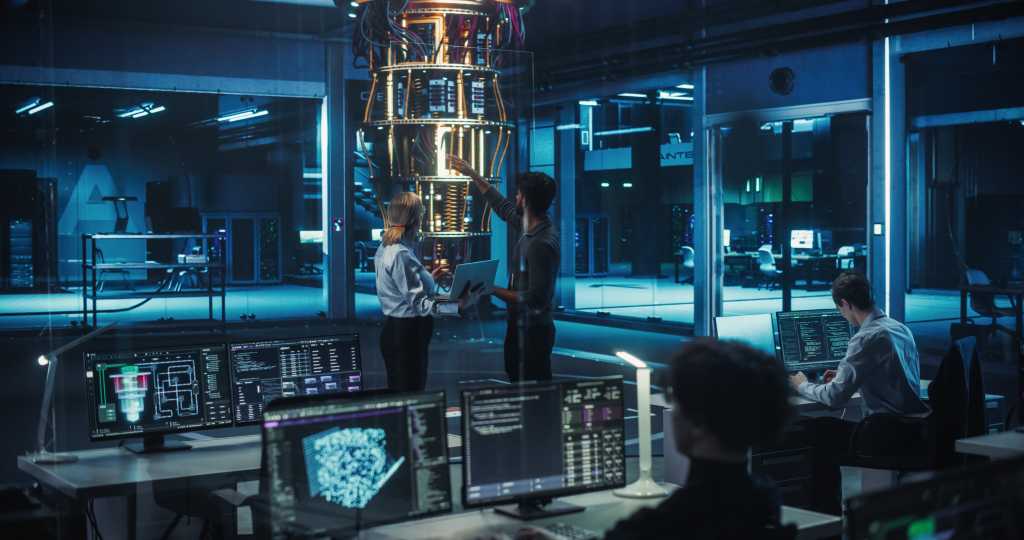Industry experts warn that organizations must fight today’s AI-enabled threats while preparing for quantum’s future impact on encryption.

Artificial intelligence (AI) adoption is accelerating, and quantum computing is steadily moving from theory to reality. In fact, the United Nations declared 2025 the International Year of Quantum Science and Technology, signaling quantum’s shift from experimental research to real-world applications.
For IT leaders, the convergence of AI and quantum represents both unprecedented opportunity and an emerging security crisis. From deepfake-enabled phishing campaigns that are eroding trust to the looming quantum decryption threat that could expose decades of secured data, IT leaders face a race to rethink their defenses.
Foundry reached out to the CIO Experts Network, a community of IT professionals and technology industry influencers, to explore the most vexing data security challenge for IT leaders over the next few years — and solutions for countering these threats. Their responses point to a dual challenge: countering today’s AI-enabled threats while preparing for the disruptive impact of quantum computing.
The quantum clock is ticking
Vivek Singh, senior vice president of IT and Strategic Planning at PALNAR, warns that quantum computing could render encryption useless across email, WhatsApp, virtual private networks (VPNs), authentication protocols, digital signatures, and more.
“A critical challenge lies in the potential for retroactive decryption. If someone’s sensitive data is stolen today, it could be decrypted in the future with quantum capabilities,” he says. “From my perspective, the most vexing challenge is managing the dual pressure of preparing for postquantum cryptographic resilience while simultaneously defending against increasingly sophisticated AI-enabled cyberthreats — we can say AI-driven threats like deepfakes, automated phishing, voice calibration, and intelligent malware. “
Gene De Libero, principal consultant at Digital Mindshare LLC, agrees that the quantum deadline is near.
“AI-powered attacks are learning and adapting faster than security teams can respond,” he says. “We’re seeing malware that breaks out in 51 seconds and 560,000 new variants created daily. Meanwhile, bad actors are stealing encrypted data right now, banking on quantum computers’ cracking it later. The real problem: You need to start quantum-safe crypto migration by 2026 while fighting AI threats that evolve faster than you can patch.”
AI: Faster, smarter, harder to detect
Peter Nichol, data and analytics leader for North America at Nestlé Health Science, notes that AI-powered adversaries are already changing the game and that the rise of AI agents is expanding the attack landscape.
“Today’s organizations face an increasingly complex and exposed digital surface area. Adversaries are also harnessing AI, automation, and crime-as-a-service ecosystems. Threats are no longer one-dimensional — they’re multivector, AI-driven, and quantum-enabled. Dynamic data security risks are accelerating as we move toward quantum-enhanced AI [QAI],” he says. “The speed and sophistication of these threats now exceed conventional defense thresholds. Quantum annealers, using variational algorithms, can rapidly train reinforcement learning agents, allowing autonomous malware to morph in hours rather than weeks and learn how to bypass detection on first execution.”
Nichol also points to the rise of AI-powered algorithmic collusion — malicious behaviors that emerge without explicit coordination and are nearly impossible to detect. These self-taught, cooperative threat patterns evolve independently, adapting in ways traditional defenses can’t anticipate.
“A clear example is AI-driven botnets using reinforcement learning to evade detection. Multiple agents are deployed into a cloud-based microservice environment, where they independently learn which behaviors help them persist, spread, and avoid detection, such as altering email spelling, adjusting image-to-text ratios, or adapting to traffic throttling,” says Nichol.
The lack of coordination, combined with subtle behavioral drift, renders traditional detection methods ineffective. Nichol warns that AI agent collusion is creating decentralized, self-evolving threats that outpace conventional security models and demand entirely new defensive strategies.
Defending today while preparing for tomorrow
Ed Fox, CTO of MetTel, frames the issue as “a two-front war: securing an ever-expanding, real-time digital frontier while racing to future-proof its very foundations.
“The most vexing data security challenge for IT leaders is securing the explosion of decentralized, multimodal data generated by autonomous AI agents, especially as our industrial systems increasingly connect to the internet, creating new physical vulnerabilities. IT leaders must simultaneously defend against dynamic AI-driven threats that can impact physical operations now, while strategically preparing for a massive cryptographic overhaul to protect from future quantum attacks.”
Some see the path forward as requiring business alignment and cultural change alongside technical defenses. Arsalan Khan (@ArsalanAKhan), a speaker, adviser, and blogger, argues that the biggest risk isn’t just technical — it’s strategic.
“While IT leaders can address the technical aspects — from data governance frameworks and postquantum cryptography readiness to AI threat detection — it’s business leadership that must drive a culture of shared responsibility. In my view, the most vexing data security challenge for IT leaders today is not the technology itself but convincing business leadership that data security is no longer just an IT issue; it’s an enterprise imperative.”
AI and quantum are converging to create a perfect storm for IT security. The challenge is not just to defend against sophisticated AI-enabled attacks now but also to act decisively before quantum computing renders today’s safeguards obsolete.









